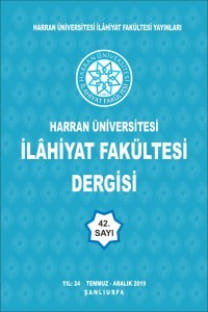el-İmam Müslim ve Mencuhû fi Ta’lîli’l-Esânîd
Öz
The significance of the study springs from two reasons. The first is that it deals with Imam Muslim's Hadith book (Al-Sahih) – the second authentic book after the Noble Qur'an. The second is that the topic is concerned with the claim of flaws mentioned by Muslim himself about some narrations in his book, other claims of flaws to which he did not pay attention, and others of complete denial of any depreciating flaws. Therefore, there has been a need for a scholarly study that makes clear his methodology of explaining flaws; whether he mentions flawed Hadiths in his book; if he does, how and why he does it; and whether he was aware of the other scholars' criticisms.The study tracks the Hadiths and narrations criticised by some scholars for flaws, as well as those narrations believed by other scholars to have been reported by Muslim to show their flaws for reasons related to the chain or text of the Hadith.The study is divided into two parts. Part One addresses the theoretical aspect of the issue. Part Two practically investigates the flawed narrations reported by Muslim, in his (Al-Sahih). It is concluded that the book is worth calling (al-sahih) – i.e. The authentic. Muslim mentions some flaws in a similar way to other compilers of hadith who demonstrate and draw attention to flaws in their books. Furthermore, the general features of his methodology in mentioning and drawing attention to flaws are listed
- ISSN: 1303-2054
- Yayın Aralığı: Yılda 2 Sayı
- Yayıncı: Harran Üniversitesi İlahiyat Fakültesi
Sayıdaki Diğer Makaleler
Kur'an'da Bir Ahlak Ölçüsü Olarak "Yürüme Tarzı"
Dinin Toplumsal Yaşam Üzerindeki Etkisi
İlk Mufassal Hidâye Şârihi: Ebu’l-Abbâs es-Serûcî (637-710/1239-1310) Hayatı ve Eserleri
Kur'an'da Bir Ahlak Ölçüsü Olarak "Yürüme Tarzı"
Hace Yusuf Hemedani: İki Büyük Sufi Tarikatının İlham Kaynağı
Fatkhiddin MANSUROV, Faudzinaim Hj BADARUDDİN
Lübnan Merkezli Çağdaş İslamî Bir Cemaat: Abdullâh el-Habeşî ve Ahbâş Cemaati
Sıyagu’l-Emr ve’l-İstifâde Minha fi Ta’lîmi Gayri’n-Nâtıkîne Bihâ bi-Nemûzec Alâ Vezni İf’al
el-İmam Müslim ve Mencuhû fi Ta’lîli’l-Esânîd
Müberrirâtu Müeyyidî Lugati’l-Kur’ani’l-Arabiyyeti’l-Fushâ
Risale-i Nur Külliyatında İtikadî Mezheplerin Değerlendirilmesi
